Description
The Vehmic Courts of medieval Germany are steeped in secrecy and mysticism, originating in 13th C Westphalia, and receiving their authority from the Holy Roman Emperor, who granted the authority to administer capital punishment in his name. Much of the courts’ operations were held in secret and its organization was elaborate, with a Freigraf (free count) chosen as president for life, a Stuhlherr (chairman) and lay judges initiated into the court known as “Freischöffen”. The usual court was held during the day and all freemen, whether initiated or not, were admitted. However, only those initiated into the court were allowed to attend secret proceedings. Anyone not a member on being discovered was instantly put to death. Crimes of a serious nature, and those that were deemed unfit for ordinary judicial investigation, such as heresy and witchcraft, fell within the court’s jurisdiction. Only Freischöffen could act as accusers, and they had immense power over life and death, which ultimately led to corruption. By the middle of the 14th century thousands of Freischöffen were scattered throughout Germany, known to each other by secret signs and pass-words, all of them pledged to serve the summons of the secret courts and to execute their judgment. Members were pledged to secrecy on all the symbols and machinations of the court, upon pain of death. The courts were at the height of their power in the 14th and 15th Centuries, but continued to a lessor extent until they were abolished in 1811 by Jerome Bonaparte, king of Westphalia.
This forged iron cross is of diamond-section, with each of the arms of the cross tapering to a point. Incised on each face are a series of mystic symbols, the meaning of which has been lost over the ages. Other than symbolism, the use of this cross is not certain. It is believed that if an accused was found guilty, he would be immediately executed, with a dagger bearing mystic symbols and a note beside the body indicating that the victim had been killed by the court, and not a murder. Being pointed and bearing mystic symbols, this cross could have been employed in this manner. Length 14 1/2” (36 cm), width 9 1/4” (23.5 cm), weight 29.4 oz. (833 g). Very solid, with dark rust patina, the uppermost point bent. An extremely rare artifact from the medieval justice system.

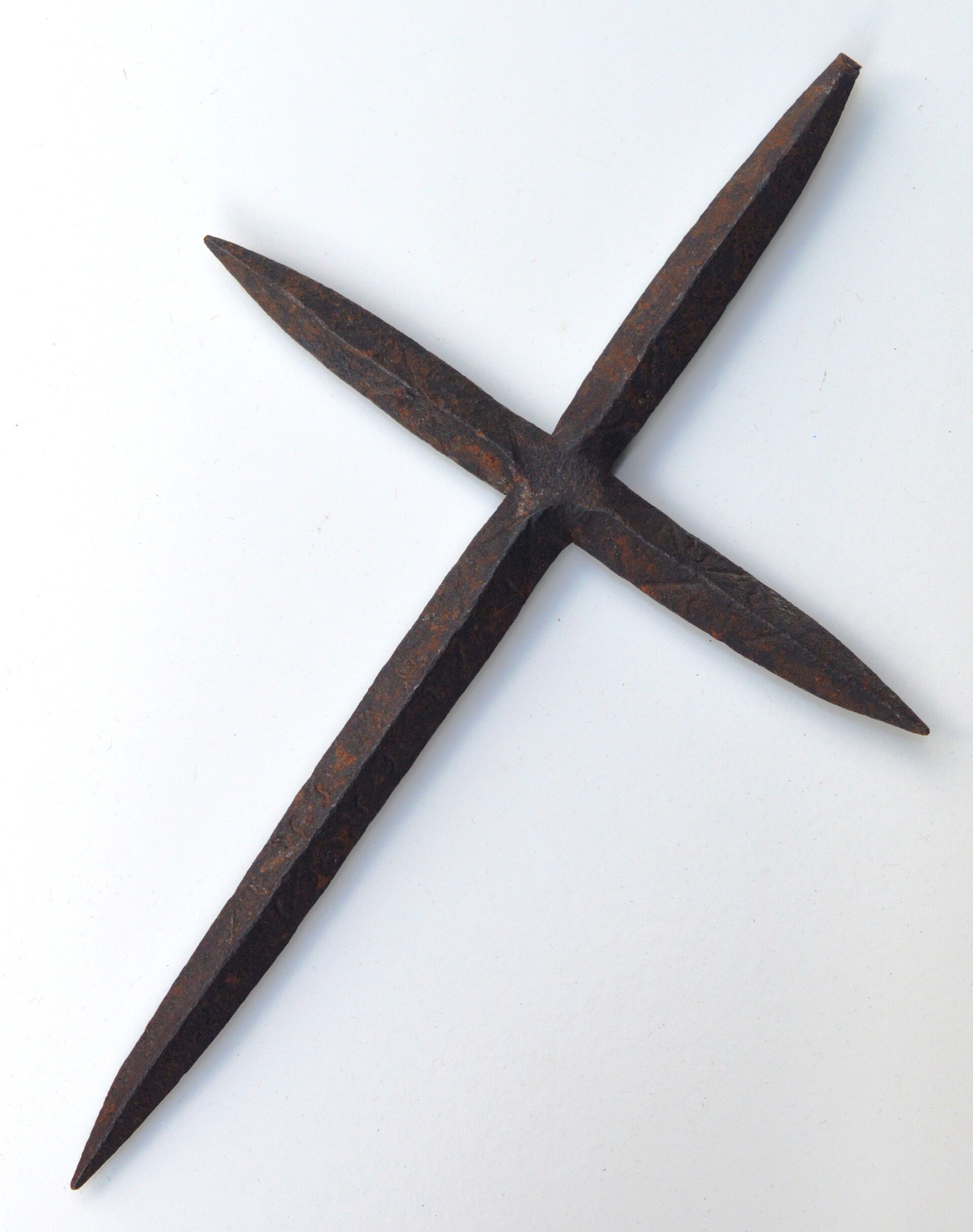

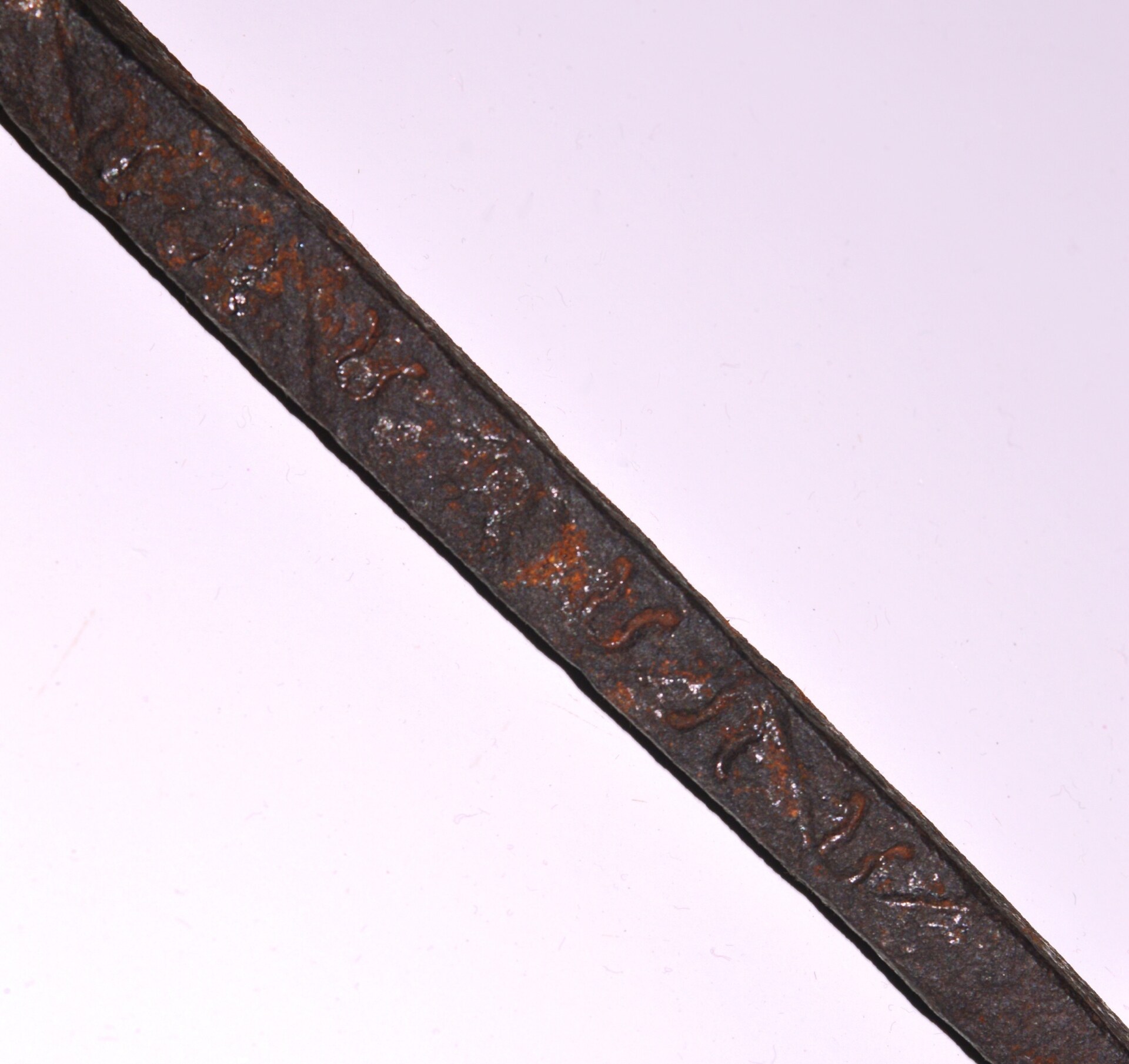
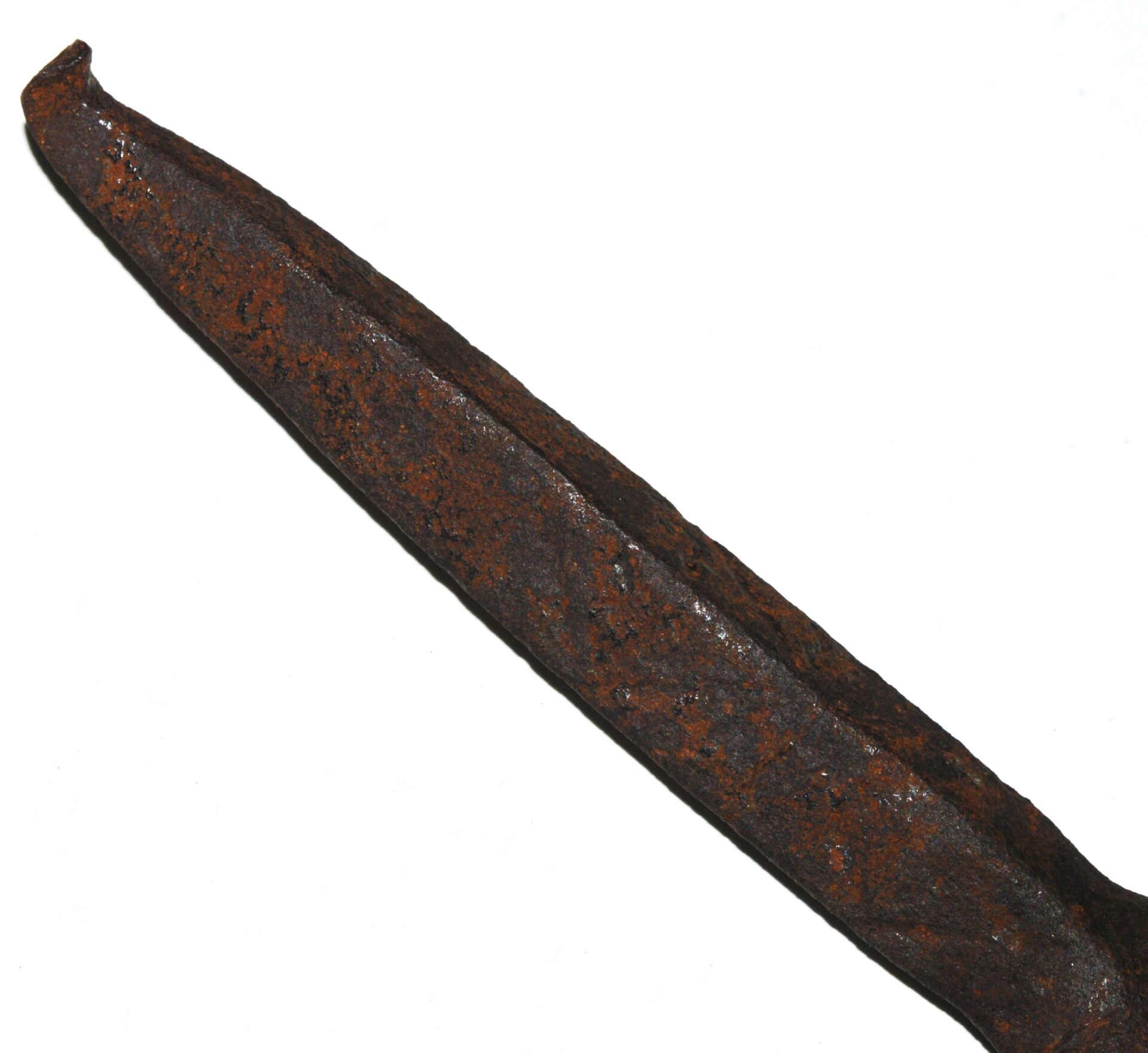
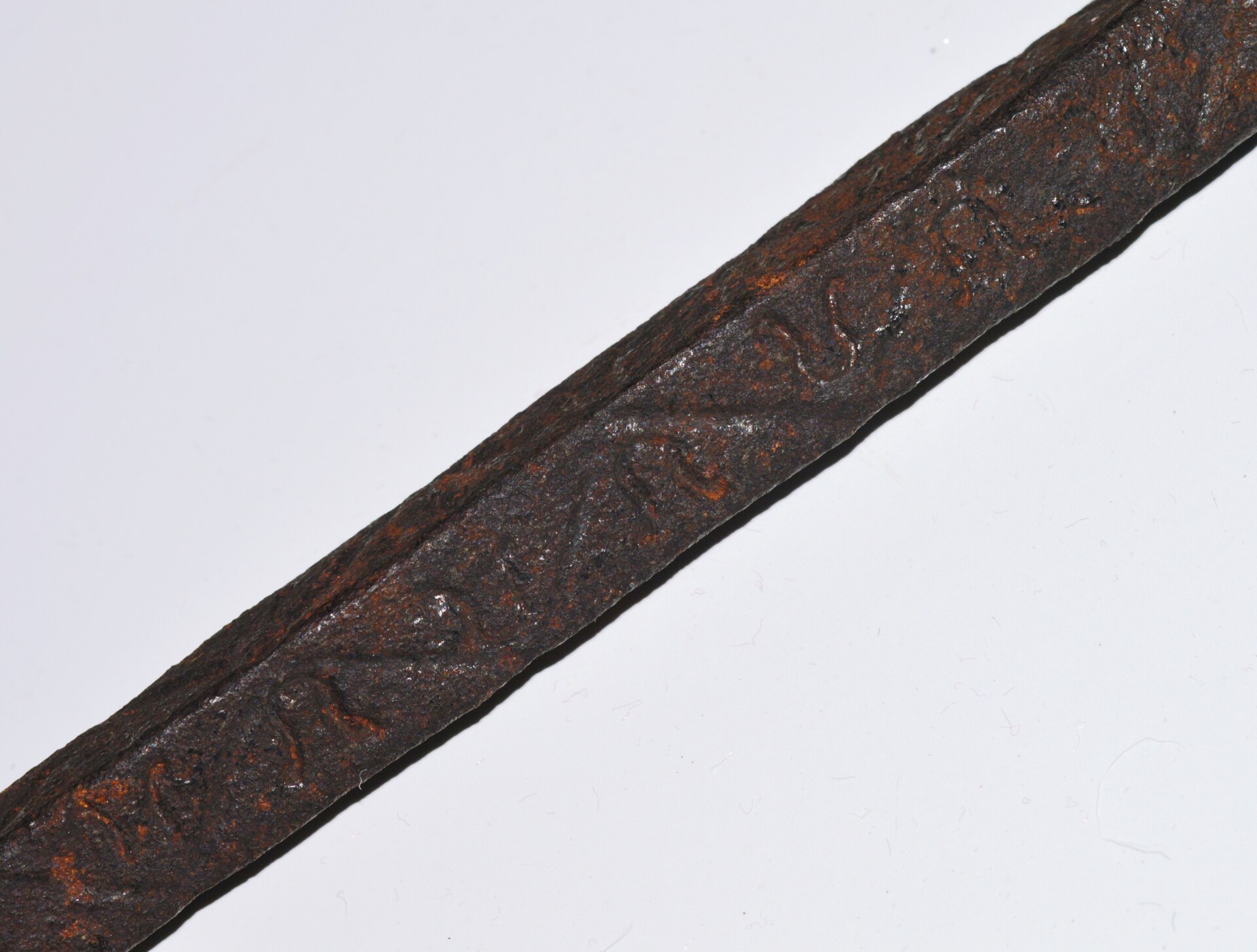
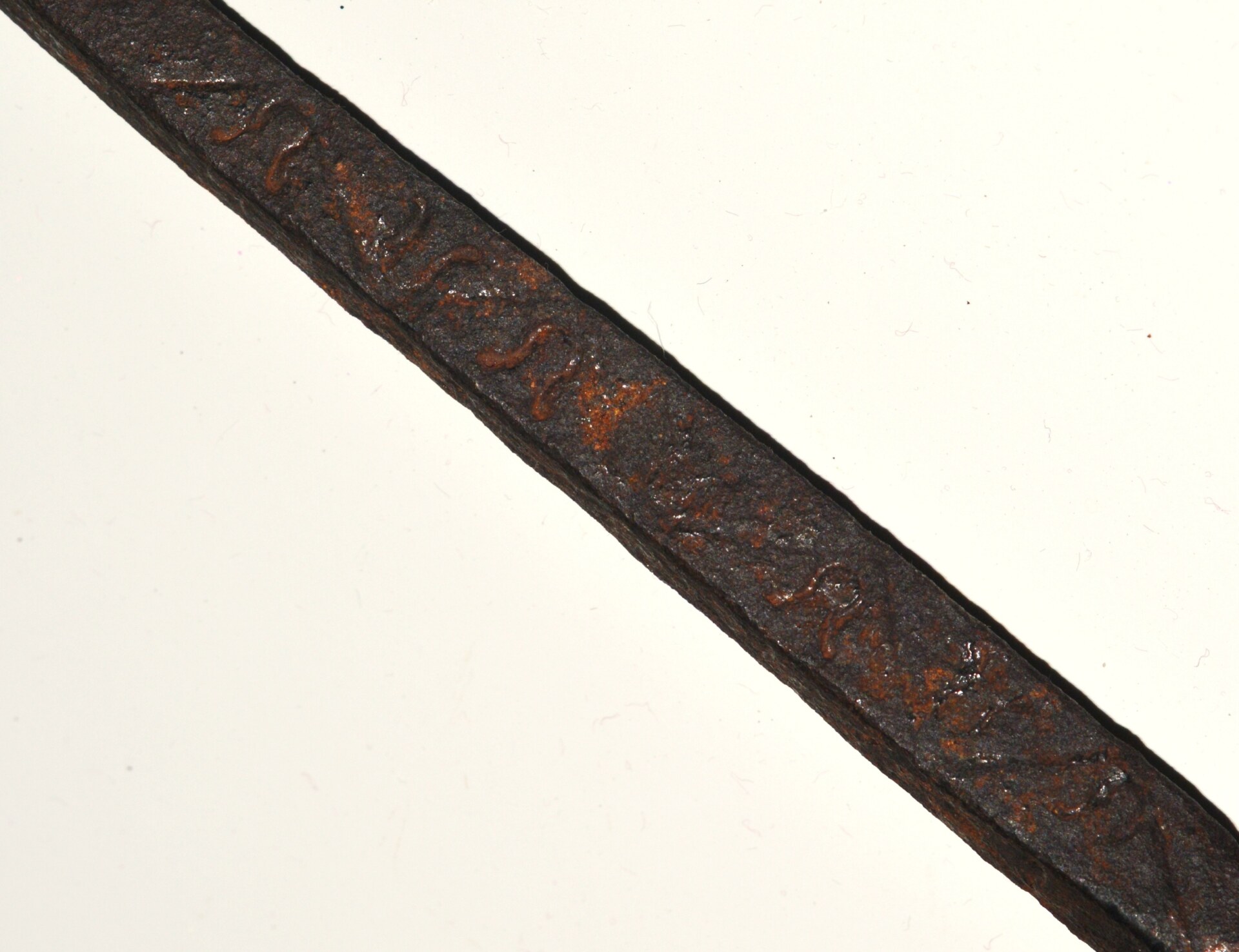
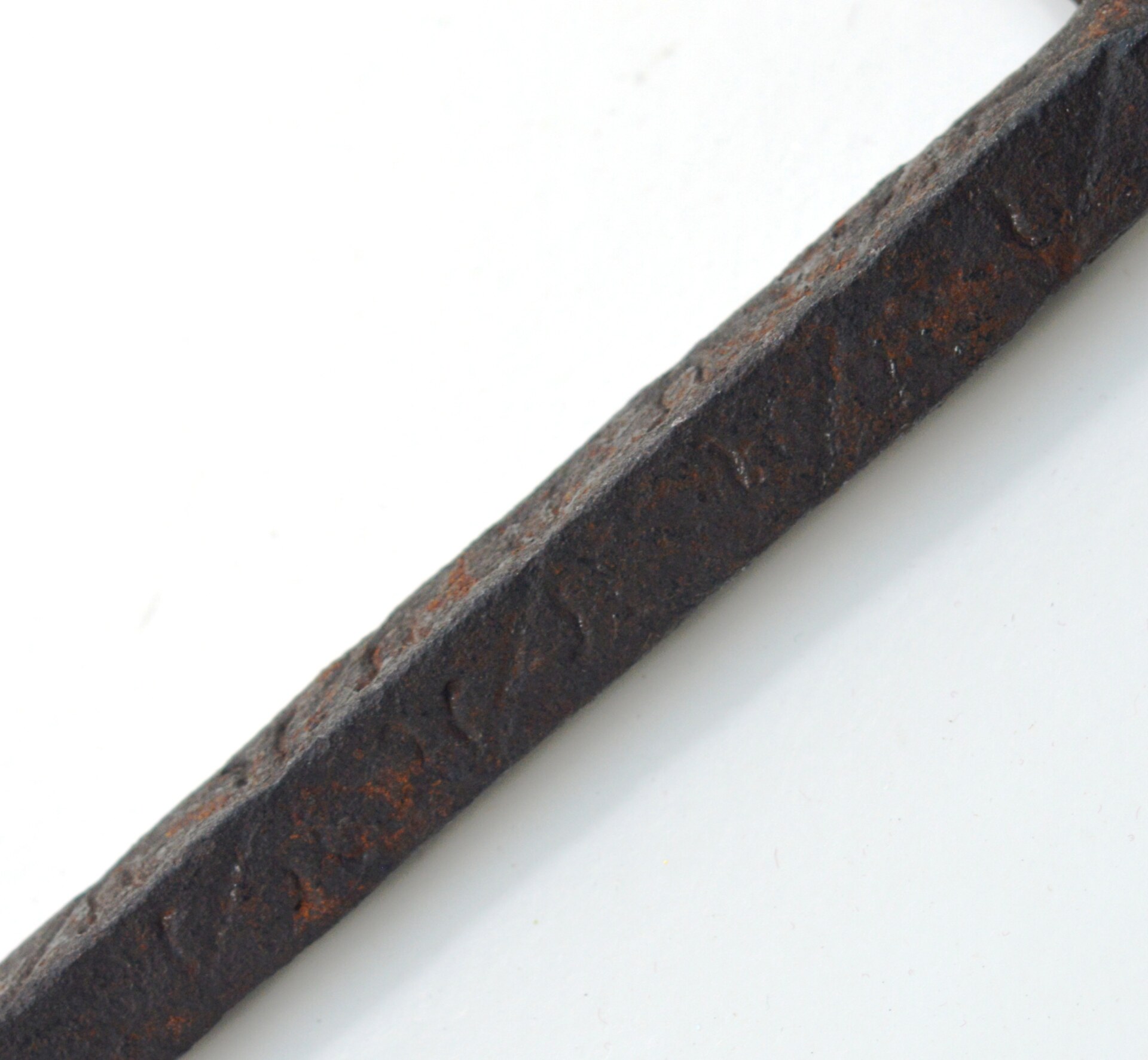

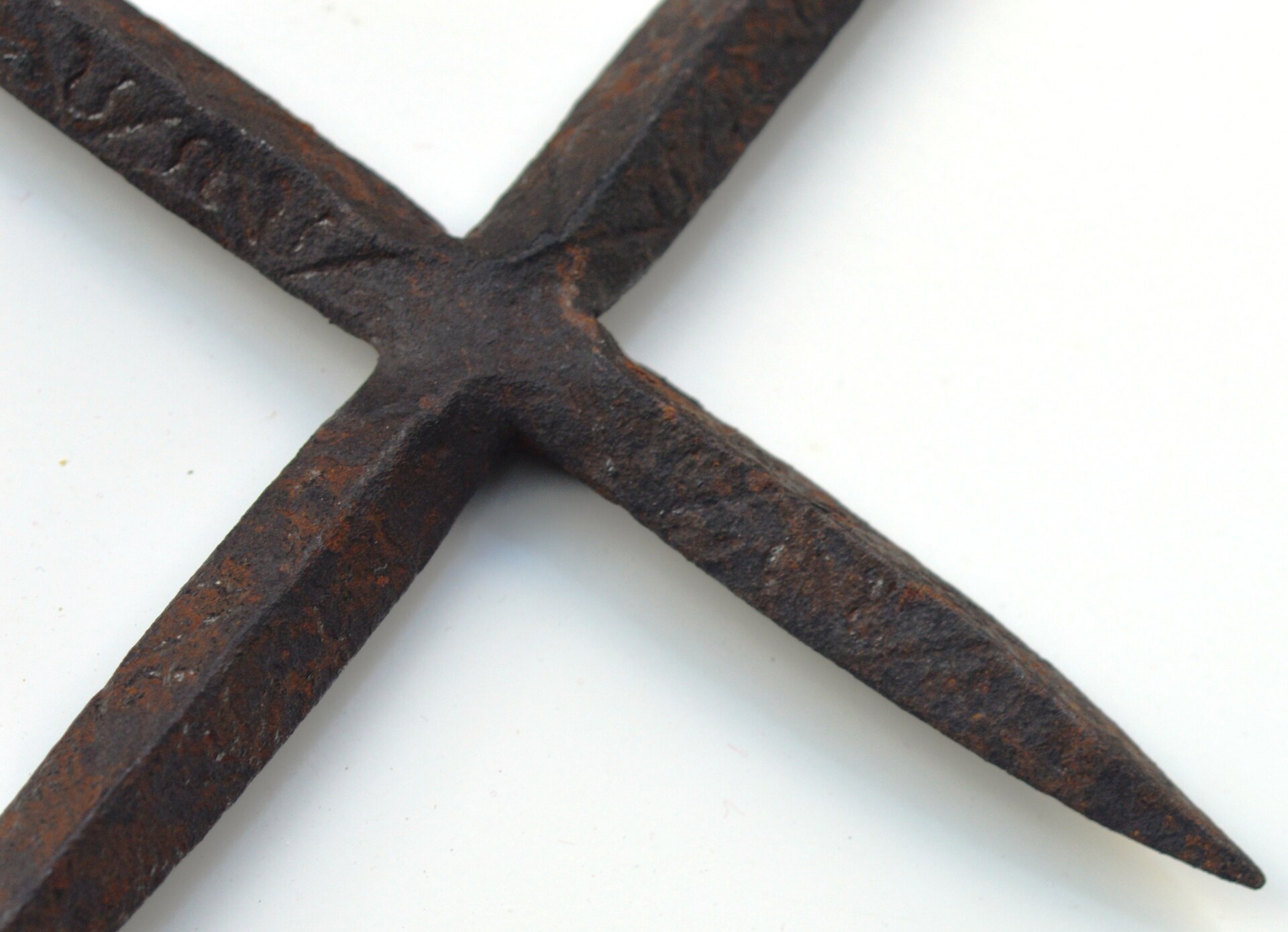
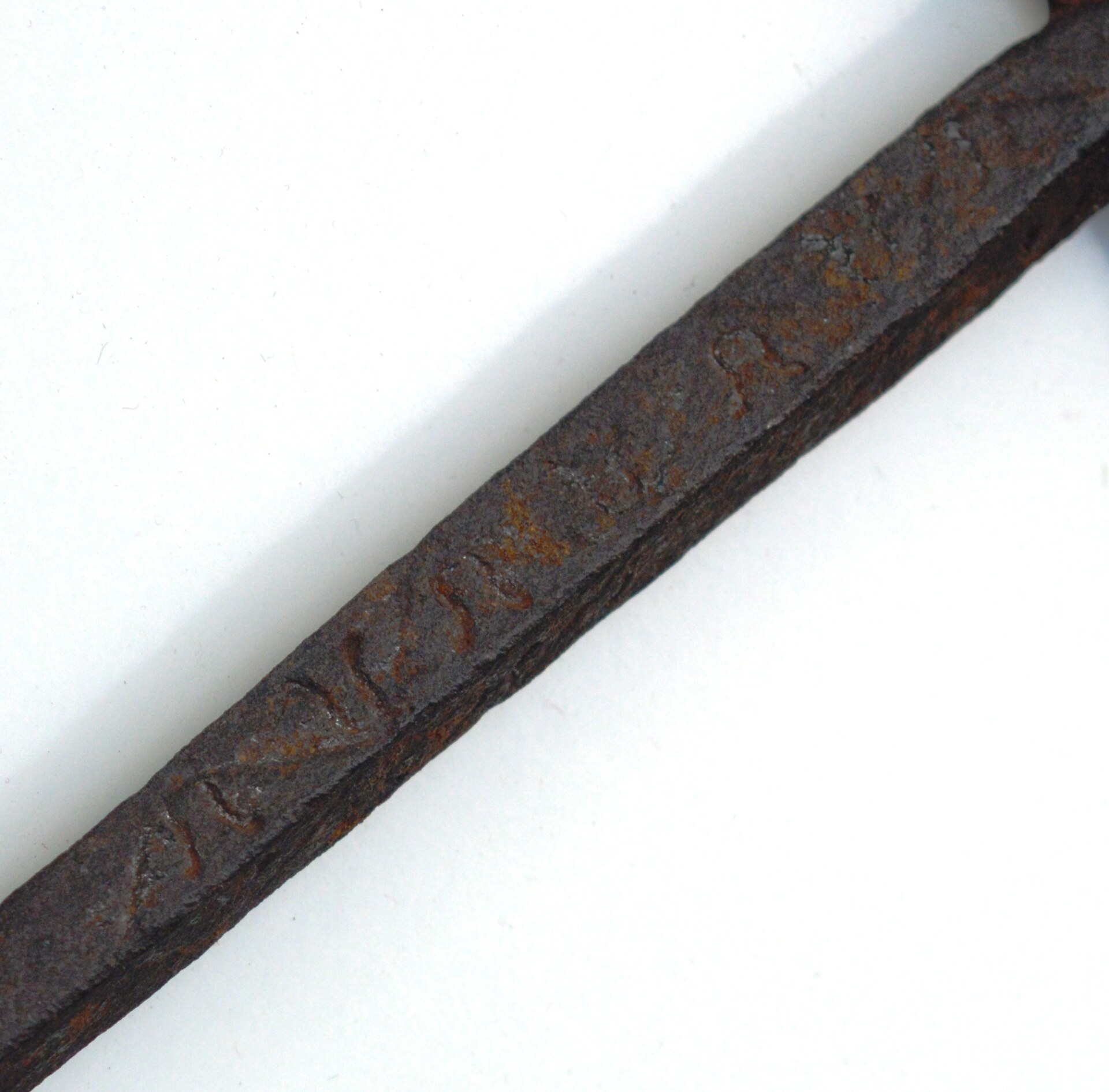
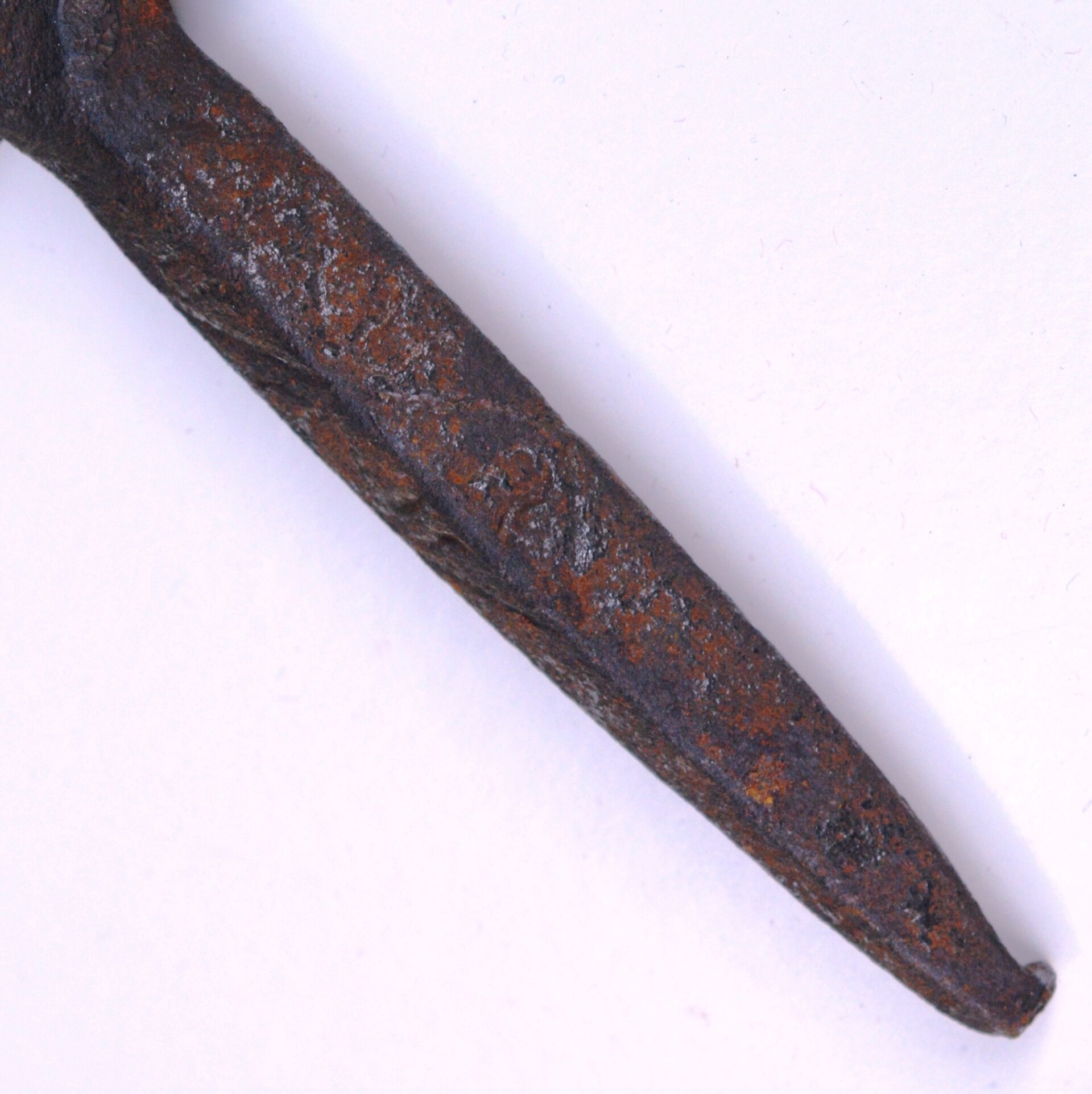
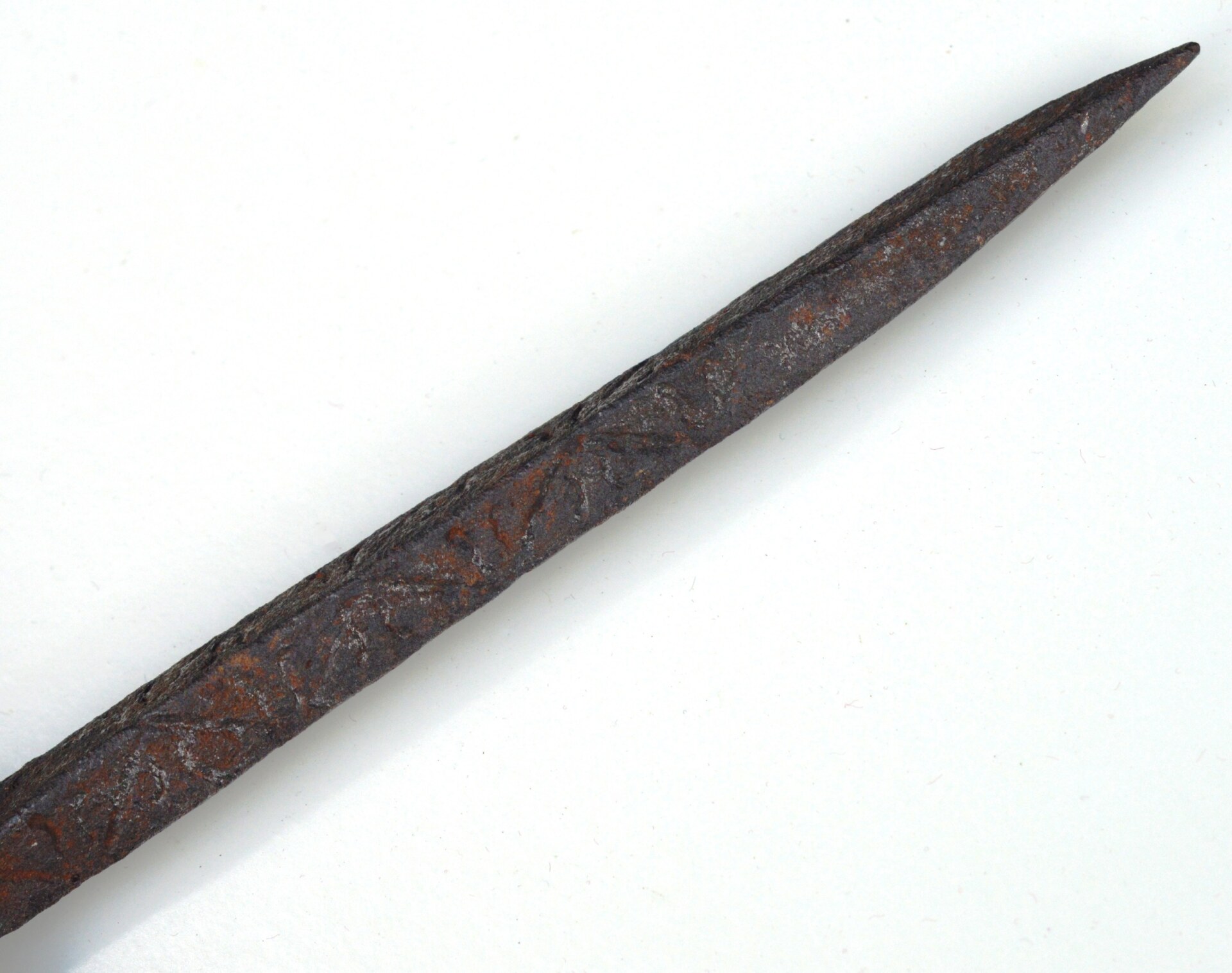
 Blood-stained Japanese Kamikaze Hachimaki Headband
Blood-stained Japanese Kamikaze Hachimaki Headband 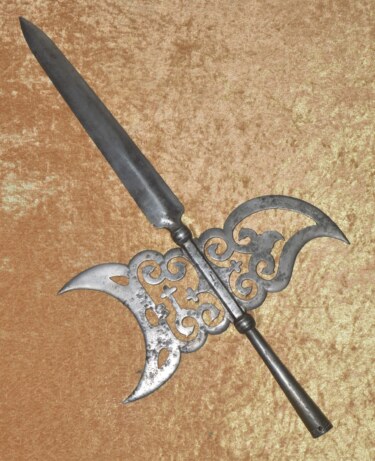 Spanish Colonial Halberd, 18th/19th C
Spanish Colonial Halberd, 18th/19th C 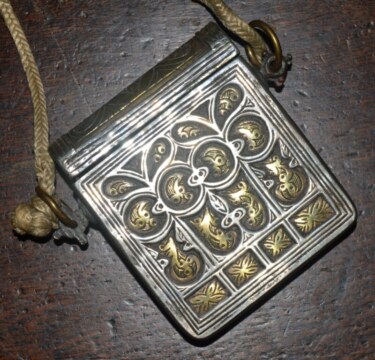 Ottoman Cartridge Box Palaska, Early 19th C
Ottoman Cartridge Box Palaska, Early 19th C  German Halberd, ca. 1580
German Halberd, ca. 1580